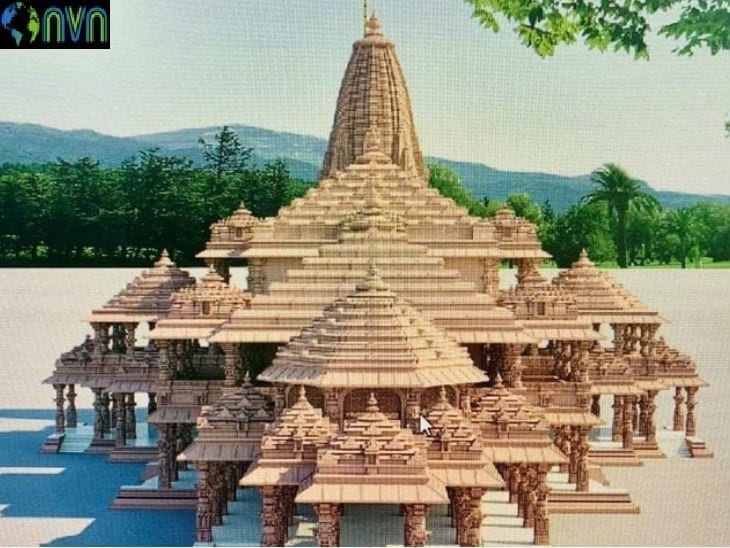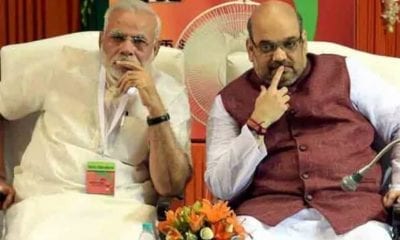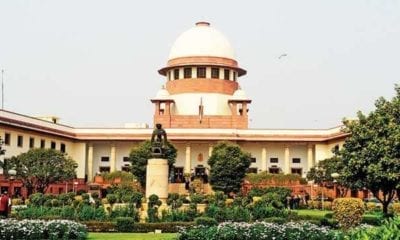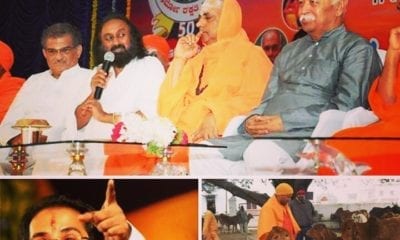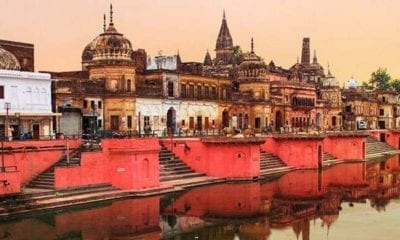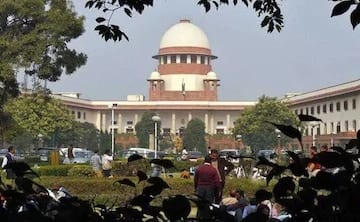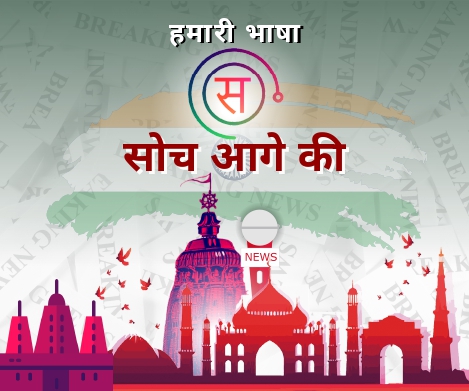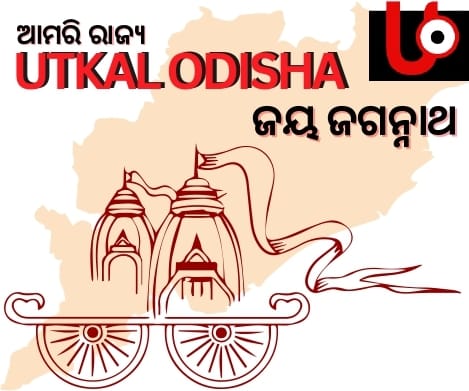India
Sri Ram Janmabhoomi – Ayodhya – Truth & Facts – Do You Know?
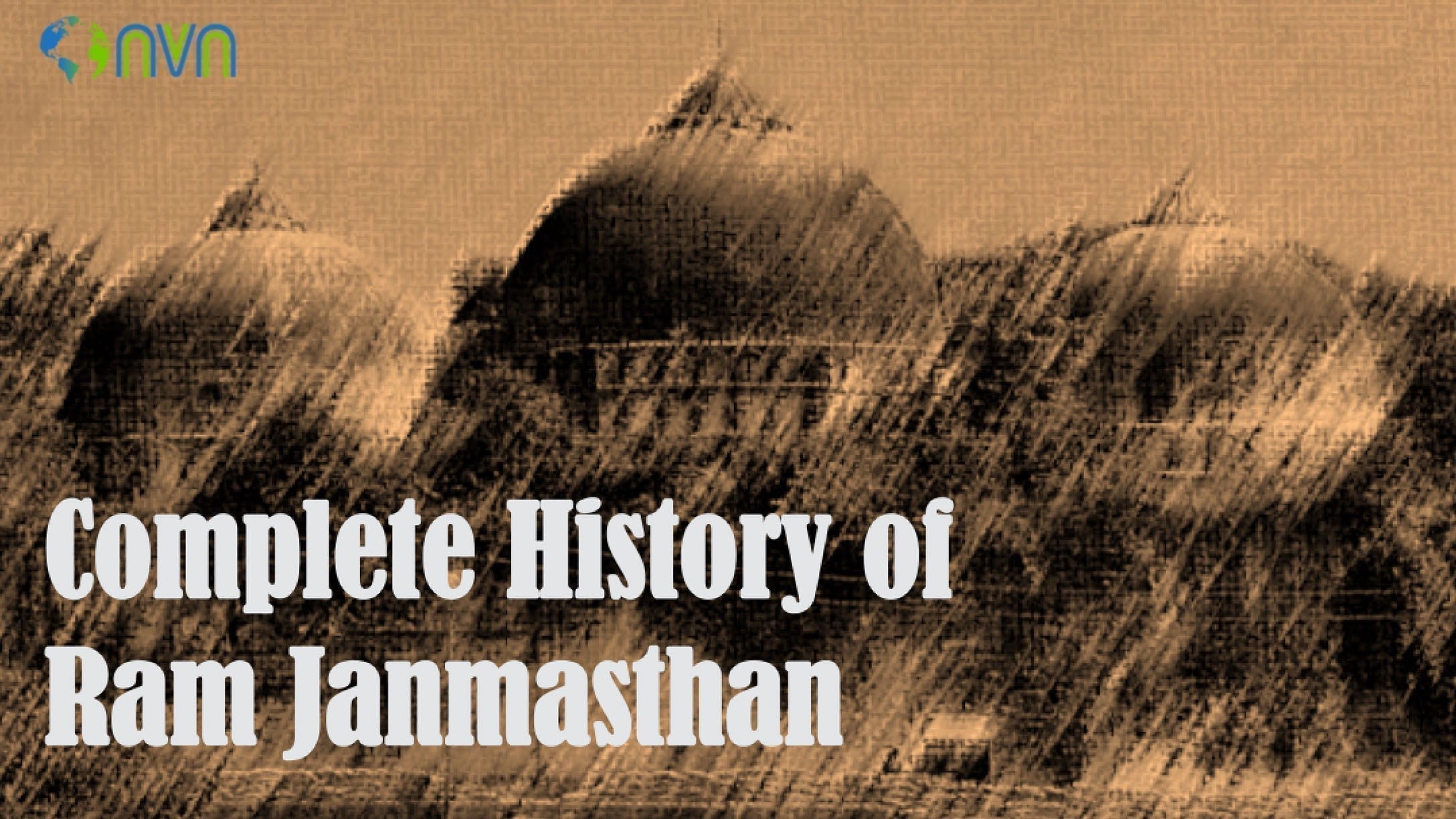
While many may feel jubilance over RAM temple as a political act to seek the Hindu vote bank. One needs to see the history of the Hindu struggle for the Ram Janmabhoomi temple below: it is nothing less than Freedom struggle…( historical facts as presented in SC with no twists)
“Alexander Cunningham, in the Lucknow Gazetteer speaks about the carnage that Mir Banki, a governor under Babur, unleashed on Ayodhya. Over 1.74 lakh Hindus who had gathered to protect the Shriram temple site were ruthlessly slaughtered; their bodies piled high and wide. Mir Banki’s canons fired into the temple and reduced it to rubble.
Hamilton writes in the Barabanki Gazetteer ‘Jalalshah used stones from Lahore coloured with the blood of Hindus in the construction of the mosque. Kajal Abbas Musa Ashikan Kalandarsahib a zealous Muslim fakir was the ‘inspiration’ for the destruction of the temple and the construction of a grand mosque in its place. He had plans to turn Ayodhya into a Mecca of the east.
In his memoirs, Babur recounts the destruction of the Ram Mandir (in Ayodhya) on the orders of Abbas Musa Ashikan Kalandar and how the materials from the temple were reused to build a mosque in its place.
The wanton death and destruction in Ayodhya did not deter the Hindus from their fight to reclaim Ram Janmabhoomi, it continued even into Humayun’s (Babur’s heir) reign. 10,000 suryavamshi Kshatriya warriors of Sirsinda and Rajepur near Ayodhya, geared up to fight for Ram Janmabhoomi. They destroyed all Mughal structures surrounding the tempe area. They even managed to destroy the entrance to the Babri masjid. Three days after this started, the Mughal army engaged the kshatriya warriors and killed them. The Mughal army also had their revenge by destroying and burning down the villages from which the warriors hailed.
After the massacre during Humayun’s rule, it took some years before the Hindus could regroup and try to reclaim the Ram Janmabhoomi. Under Akbar’s (Humayun’s heir) rule another battle for Ayodhya ensued. This time however, the Mughals were not taken by surprise and the Hindus faced a strong resistance. The Hindu warriors persevered and managed to erect a platform to build a temple on, right in front of the mosque. Raja Birbal and Raja Todarmal prevailed on Akbar to allow the platform to stand. Akbar then consented to a small temple housing a Shriram murti (idol) on the same platform.
The ain-i-akbari (the chronicles of Akbar’s reign) documents this in the following words…
‘The Hindus tried 20 times to reclaim Ram Janmabhoomi. On the insistence of Raja Birbal and Raja Todarmal, Jalal-ud-din Akbar ordered that the construction of a platform be allowed in front of the Babri masjid and that a small Ram temple can be built on top of it. It was furthered proclaimed that no harm should come to the Hindu worship in the temple.’
This order was followed by Akbar’son Nuruddin Jahangir and grandson Shahbuddin Shahjahan, who allowed the daily worship to occur sans interference.
Having wrested the throne from Shahjahan, Aurangzeb turned his attention to Ayodhya. He sent his general Jabaz Khan on a campaign to Ayodhya. The Hindus of Ayodhya got wind of the impending attack and ferried the idol of Shriram and all the temple articles to safety. The surrounding villages, which had been warned of the attack, gathered a formidable Hindu force to protect the temple.
Vaishnavdas (a disciple of Samarth Ramdas Swami) used to live in the Parashuram monastery on the Ahalya ghat in Ayodhya. He had the support of 10,000 tong-wielding sadhus. When they learned of the attack by Jabaz Khan’s attack on Ram Janmabhoomi, they rushed to join and fight alongside the Hindus. For seven days the Hindus and the Mughal forces clashed at Urvashikund. At the end of a fierce battle the Mughal forces took to their heels.
Four years of peace had lulled the Hindus of Ayodhya into a false sense of security. In 1664 Aurangzeb attacked Ayodhya again and slaughtered 10000 Hindus. Their bodies were dumped into a well (भागात स्थित असलेल्या नवकोणातील कर्न्दप विहीरी) to the west of the temple and walled in. The well has stood the sands/test of time to tell the story of the cruelty of Aurangzeb and the Mughals. Today the Muslims claim ownership of the well too. It was after this war that the royal army destroyed the platform on which the Ram Mandir was built and fortified the area (याच युद्धानंतर शाही सेनेने रामजन्मभूमीचा कट्टा खोदून त्याला गडाचे रूप दिले.). Now each year, on Ramanavami, the Hindus offer flowers and other offerings to this destroyed platform.
After Aurangzeb, Lukhnow came under the rule of the Nawabs. The Hindus tried to reclaim Ram Janmabhoomi by force during the rule of Nawab Sahadat Ali. Unfortunately they failed.
The Hindus tried again to wrest control of Ram Janmabhoomi during the rule of Nawab Nasiruddin Haider. Many Hindu kings joined forces and the battle raged for 8 long days. The Nawab’s army reached Hanumangadh. There, the Hindu forces received help from the tong-wielding sadhus. Together they managed to make the nawab’s army flee and took control of Ram Janmabhoomi. This victory was short-lived though, the Nawab’s forces recaptured Ram Janmabhoomi in a few days.
Hindu efforts to regain Ayodhya continued into the reign of Nawab Wajid Ali Shah. Almost every Hindu king of Awadh, barring a couple, participated in this struggle. Cunningham’s brief account regarding this was published in a book from the Faizabad Literary collection. He says that the Nawab’s (mostly English) army stood by watching the Hindus and the Muslims fight amongst themselves to control Ayodhya. The battle raged for two days. Houses, crypts and mosques were destroyed, even livestock was not spared. Blinded by rage as they should have been, the Hindus did not cross certain lines; they did not attack or molest the Muslim women and children. However, the Muslims began to flee Ayodhya. Worried that the situation may go out of control, the Nawab’s army imposed travel restrictions in Ayodhya. Maharaja Mansingh conferred with the Nawab and directed the Hindus to rebuild a platform in Ayodhya and install the idol of Shriram there. A makeshift temple was also erected.
Even while the country was under the British rule, the Hindus did not forgo their desire to see a Temple in Ram Janmabhoomi. Attempts to take over the temple land in 1912 were thwarted by the Birtish though.
In 1934, the Hindus were able to overcome the British forces in Ayodhya and they managed to inflict significant damage to the Masjid. However, a British officer (उपायुक्) J P Nicholson, had the damage rectified and the masjid rebuilt. A small plaque in a part of the masjid reads ‘Tahawwar Khan rebuilt the mosque destroyed by the Hindus on 27.3.1934 (1352 Hijri)’.
6 December, 1992, is a date that many people are familiar with. But few people know that prior to this day, there had been 77 attempts to regain control of Ram Janmabhoomi. With 4 attempts during the time of Babur, 10 during Humayun’s rule, 30 when Aurangzeb was on the throne, 5 when Shahadat Ali was the ruler, 3 during the time of Nasir-ud-din Haider, 2 during British rule and once post independence, during the tenure of Shri P V Narasimha Rao; the struggle for Ram Janmabhoomi has been a long and arduous journey.
A sense of fulfilment can only be achieved when we stop idolising invaders and try and rebuild our forgotten heritage. Rajdharma (the code of conduct for a ruler) dictates that it is the duty of the King to look after the welfare of the subjects and provide relief when they are distressed. So if a thief targets the citizens, it is the ruler’s duty to have the thief apprehended and punished. Only with stringent and appropriate punishment can justice be delivered and order restored.
This historic judgement also reminds us of the nasty roles played by a group of shameless faceless ‘historians’ like R S Sharma, Vipan Chandra, Romila Thapar, Irfan Habib et al who distorted our history. But their efforts to influence the ASI failed. ASI is the real hero for bringing out the truth by the grace of Bhagaban Sri Ramachandra.
The clincher in the Ram Janmabhoomi matter on which basis it was finally decided, was a travelogue written by Saheb Shri Guru Nanak Dev ji where he recounts his visit to Ram Janmasthaan & describes it! The clincher in the Ram Janmabhoomi matter on which basis it was finally decided, was a travelogue written by Saheb Shri Guru Nanak Dev ji where he recounts his visit to Ram Janmsthaan & describes it! The Supreme Court took cognizance of Guru Nanak Dev ji’s travelogue since he was a contemporary of Babur. The matter rested there!
How many of you are aware that the DOCUMENTED Visit of Shree Guru Nanak Dev to the Ram Temple at Ayodhya in 1510 ( before it was destroyed by Babur’s barbarians in 1528 ) was one of the vital evidences accepted by the Supreme Court in returning the Ram Janmabhoomi Temple site to it’s rightful status. Mir Baki’s conquest of the area & entry to Ayodhya was approximately in 1528. Guru Nanak Devji Maharaj’s description of it & the travelogue are of 1510.That, little known, unpublicized fact swung the judgement immediately! It was almost as if Guru Nanak Dev ji stood up in court to testify for Ram!
Jai Sri Ram!

 Top Headlines 30th October 2020
Top Headlines 30th October 2020
